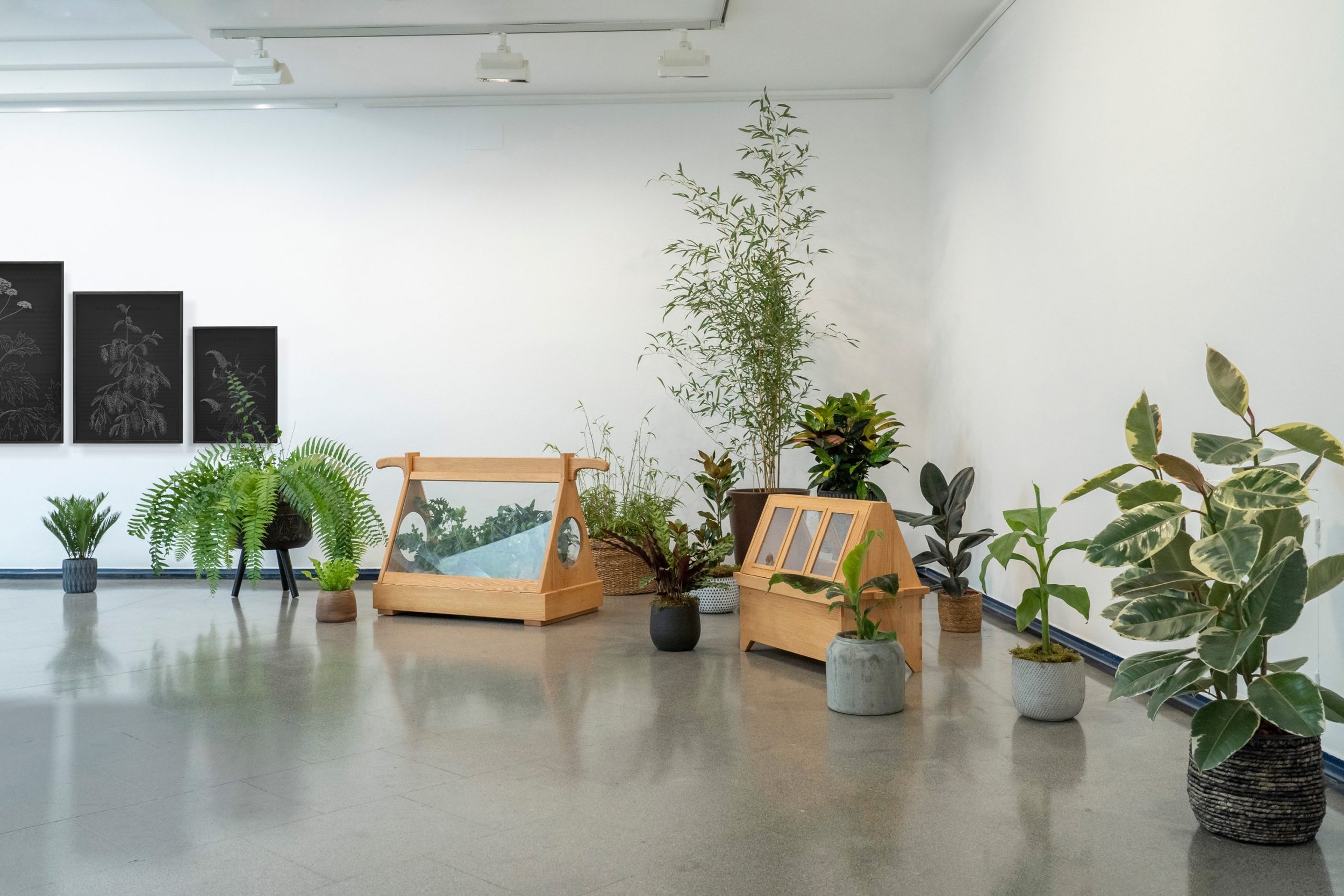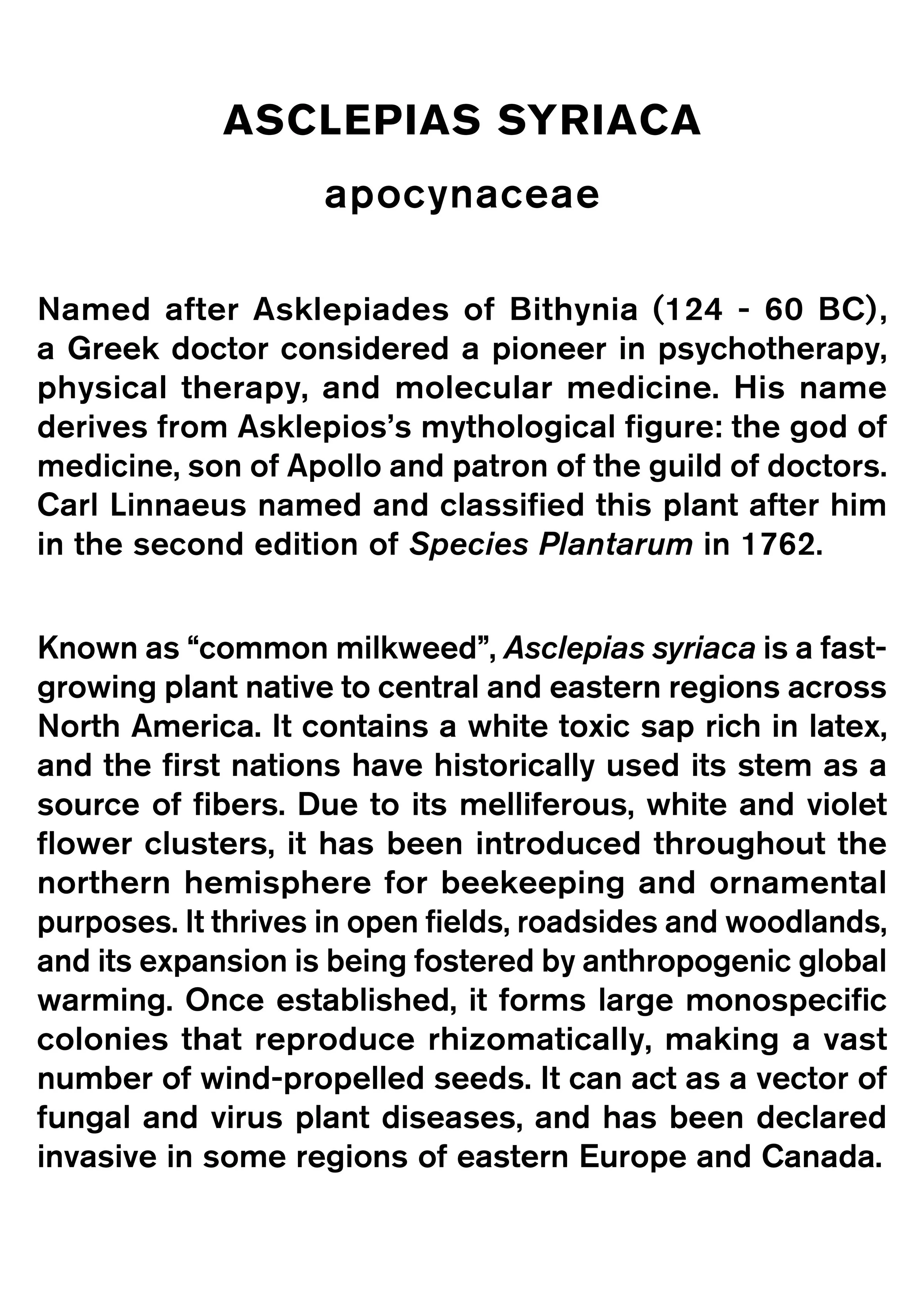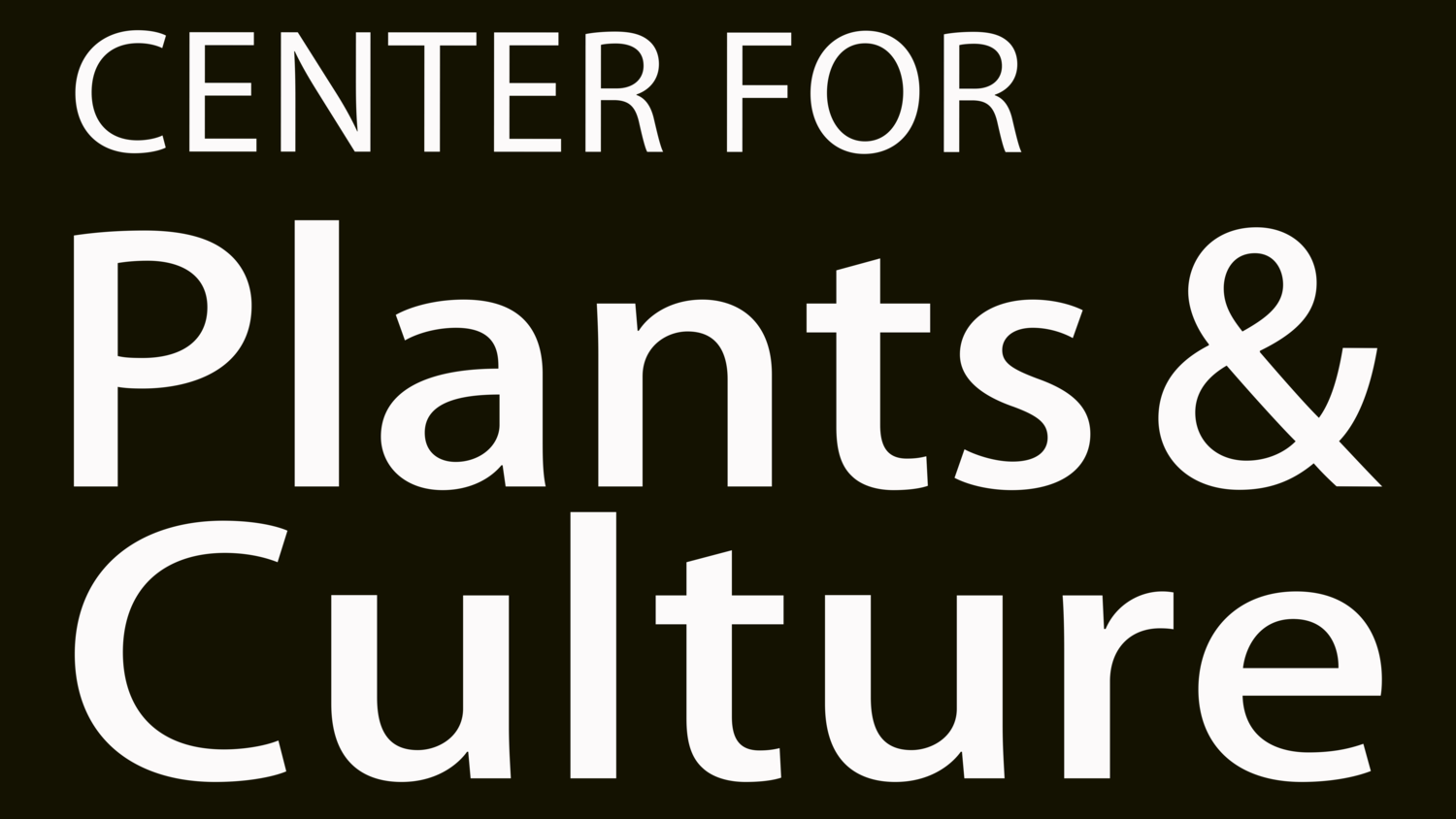
ARTWORK SPOTLIGHT:
a post-colonial inquiry of invasive species
We are thrilled to feature the transdisciplinary project, a post-colonial inquiry of invasive species by Miguel Sbastida! Centering on fourteen plants declared ‘invasive’ by the European Union, this project explores the movement of these plants, their ecological takeover, and the colonial figures who they were named after (via scientific nomenclature).

They are here because we were there, reproducing an invasive aftermath while carrying the names of our colonial ancestry. Today, they thrive in the face of climate change as one of the main contributors to ecosystem degradation.
- Miguel Sbastida
Art by Miguel Sbastida
This project features a collection of botanical drawings, etched in glass, that depict black-listed plant species—imported plants that spread so aggressively that they pose a threat to native flora. These intricate works are shown alongside a set of four sculptures, inspired by the Wardian case—a portable greenhouse that transformed the global transportation of flora during the 17th-19th centuries. The Wardian case had an unimaginably profound impact on the world’s ecosystems. By facilitating the translocation of a multitude of plants, the Wardian case introduced many exotic species around the globe that went on to monopolize resources and contribute to biodiversity loss.
During an era of exploration and cultural domination, many of these invasive plants were named after colonizers in their scientific nomenclature. As these plants proliferated around the world and journeyed to Europe, they further symbolized the movement and insidious destruction that accompanied colonialism.
Each of these works started out as drawings on paper—hand drawn and following the tradition of historical and scientific botanical illustrations. By carefully studying the plant’s physiology, growth patterns, and habitat, each composition portrays the plant’s different states: bud, to flower, to seed. This allows for clear identification and records the plant’s transformation throughout the seasons.
Once the drawings were finished, they were scanned and laser engraved onto glass. Separated from the background by a small gap, each piece of etched glass is presented against black text on black paper. The text provides the historical origin of each plant’s name and botanical information, as well as its pre-colonial and indigenous significance, native ecosystem, behaviour, and current status as an ‘invasive species.’







WARDIAN CASE
In 1829, amateur botanist Nathaniel Bagshaw Ward was studying moths in a glass enclosure, when he noticed that the plants inside could “grow watered only by the moisture which condensed during the heat of the day and returned to the soil at night.” (1)
“Further experimentation by Dr. Ward led to the “Wardian case,” a wooden box with glass top in which plants could safely be shipped on long voyages without watering or special care.” Wardian cases were vital to the success of plant transfers, and therefore, vital to the the success of an empire. (1)
In 1851, Robert Fortune “successfully [smuggled] some 13,000 plants from Shanghai to Assam” with the use of the Wardian case. “This spurred the growth of the Indian tea trade”—for the profit of the British empire—“and broke China’s monopoly over the product.”
(2)
“In 1860 Clements Markham used Wardian cases to smuggle the cinchona plant out of South America.” Coveted for its malaria-fighting properties, “cinchona production was essential to imperial growth” as it kept European colonial troops healthy in Africa and the tropics. By 1861, cinchona crops were planted in [British-ruled] India […] on a large scale.” (2)
“In the 1830s, when Ward was promoting his ideas, having an exotic plant sitting on your dining table was something to prize and marvel at. Over the next century the free movement of plants saw not only exotic curiosities arrive on foreign shores but also invasive species, diseases, and pathogens. Controlling such problems led to stricter quarantine and paved the path towards many of the practices of environmental management and biodiversity conservation we have today.” (3)
Sources:
Brockway, Lucile. "Science and Colonial Expansion" Academic Press. 1979
Maylack, Jen. "How a Glass Terrarium Changed the World" The Atlantic. 2017
Keogh,Luke. “The Wardian Case” University of Chicago Press. 2020








